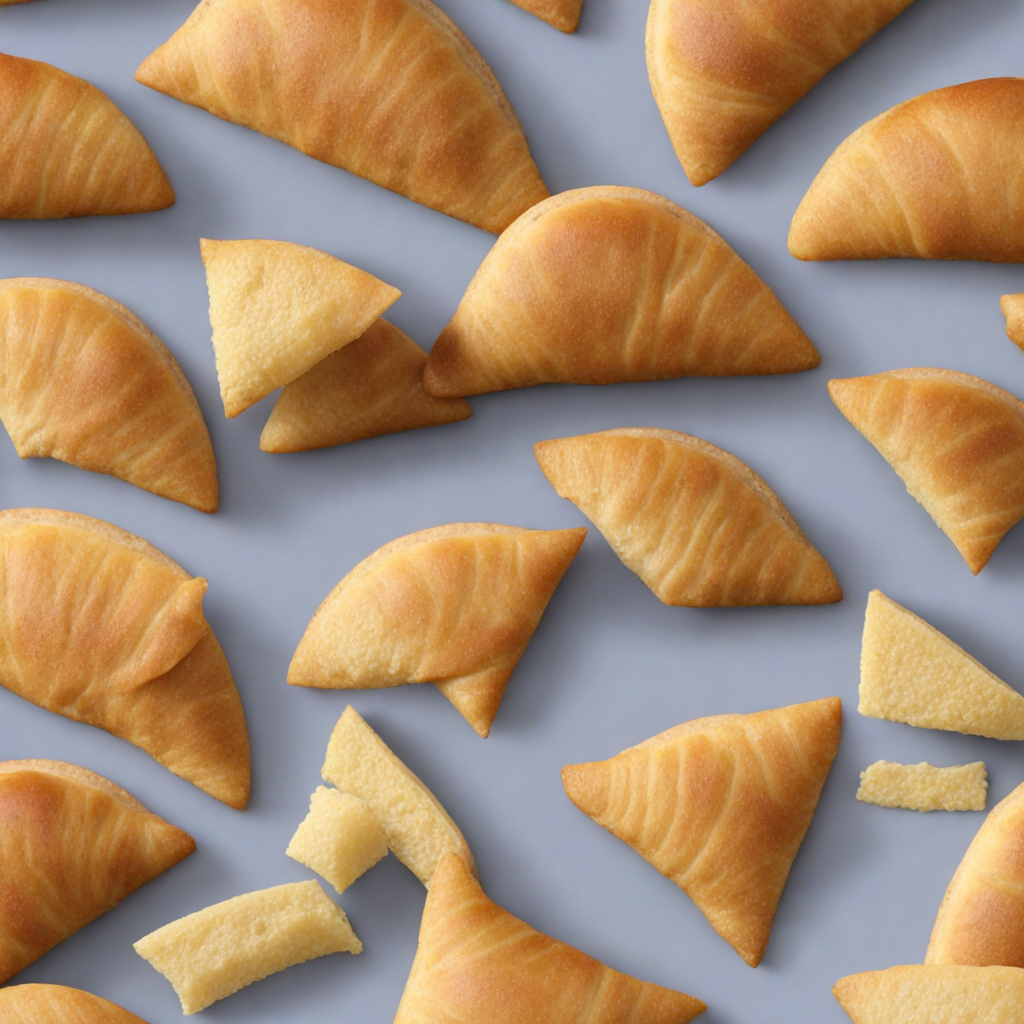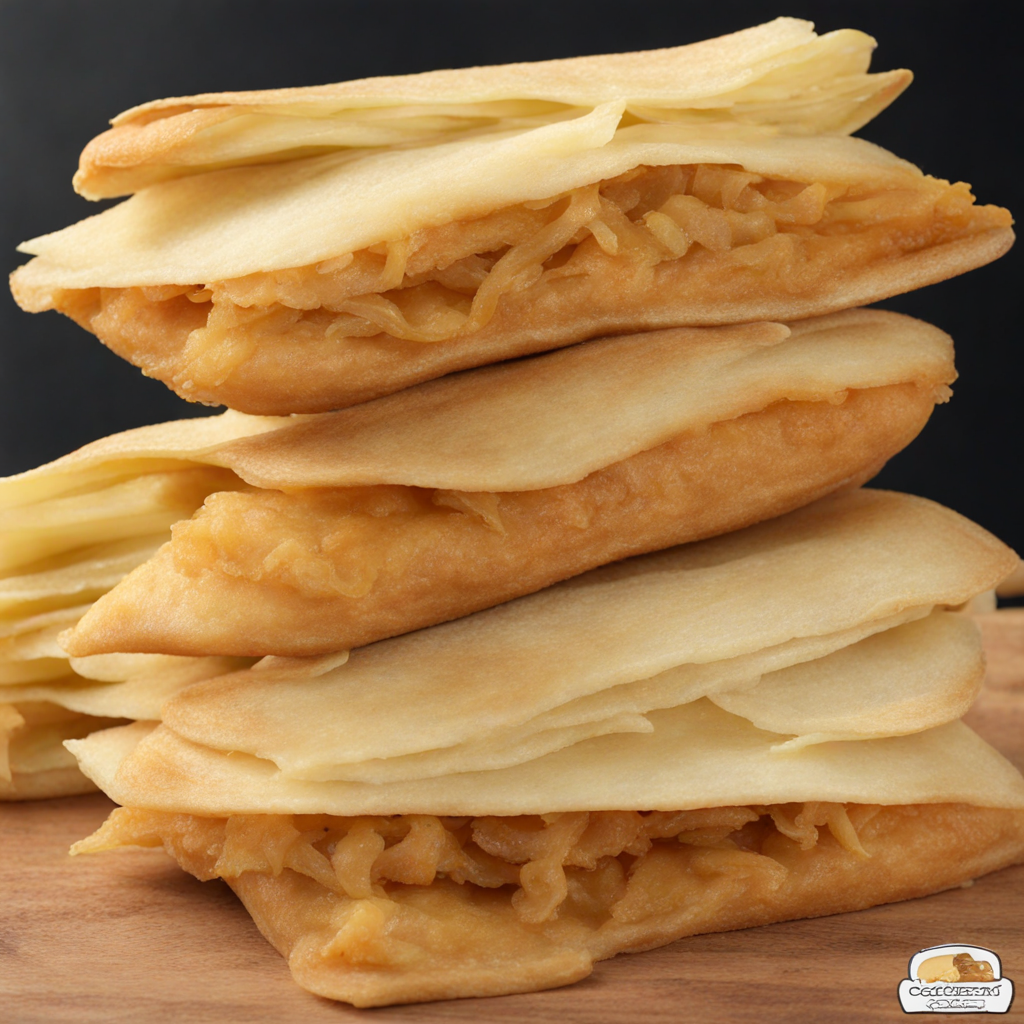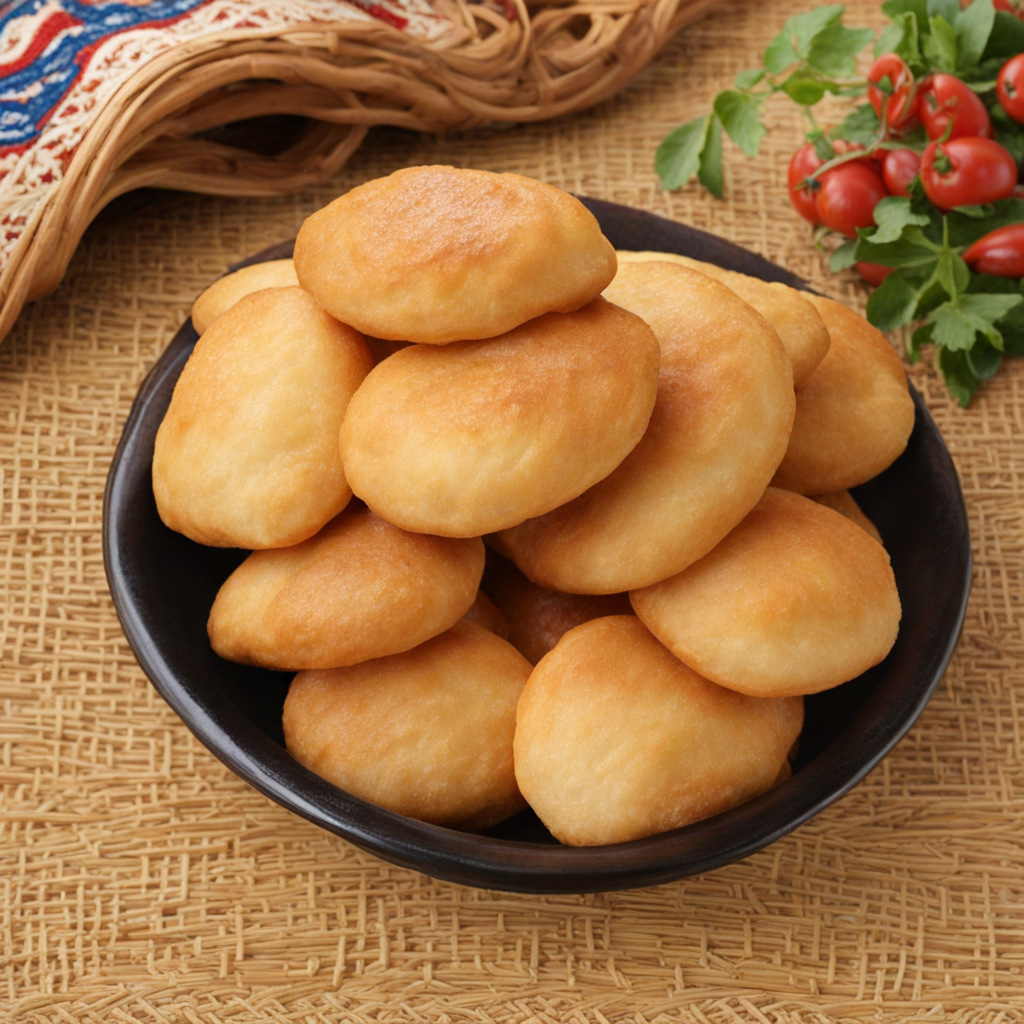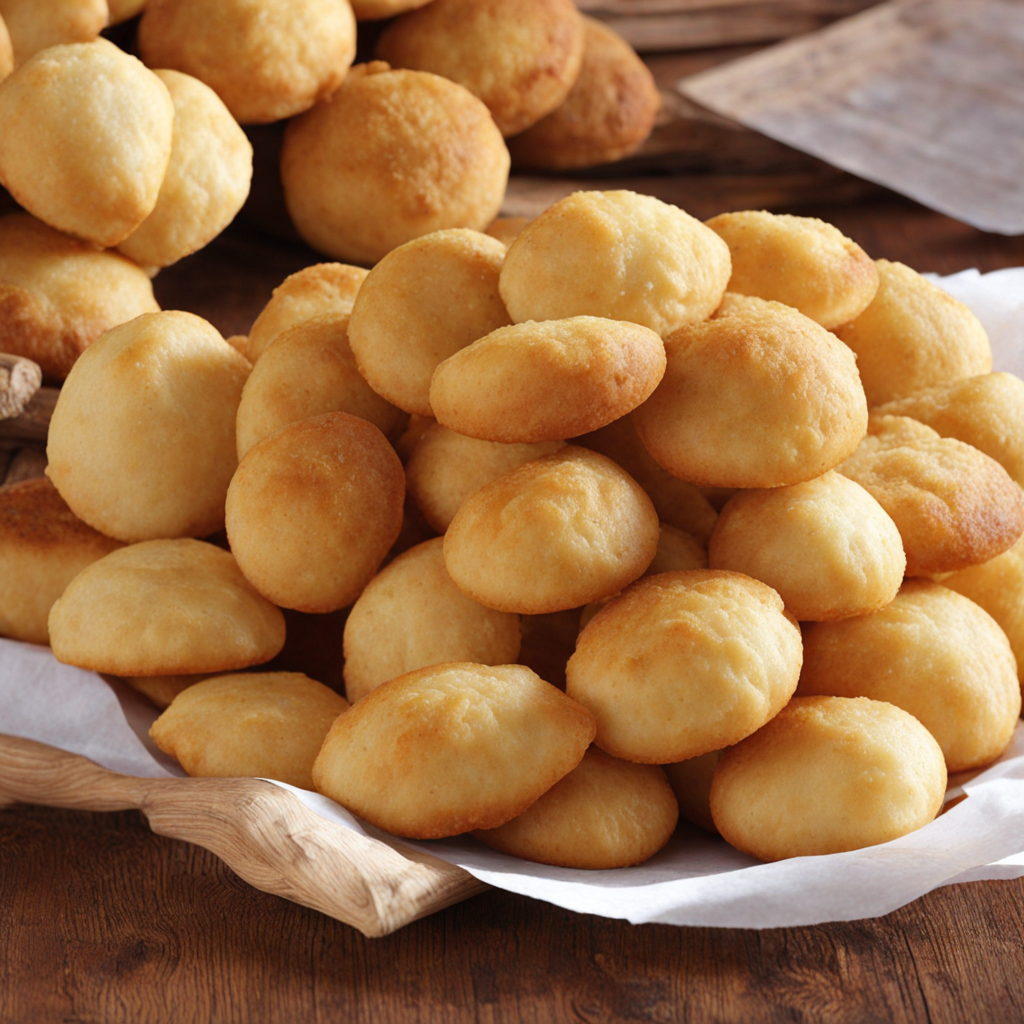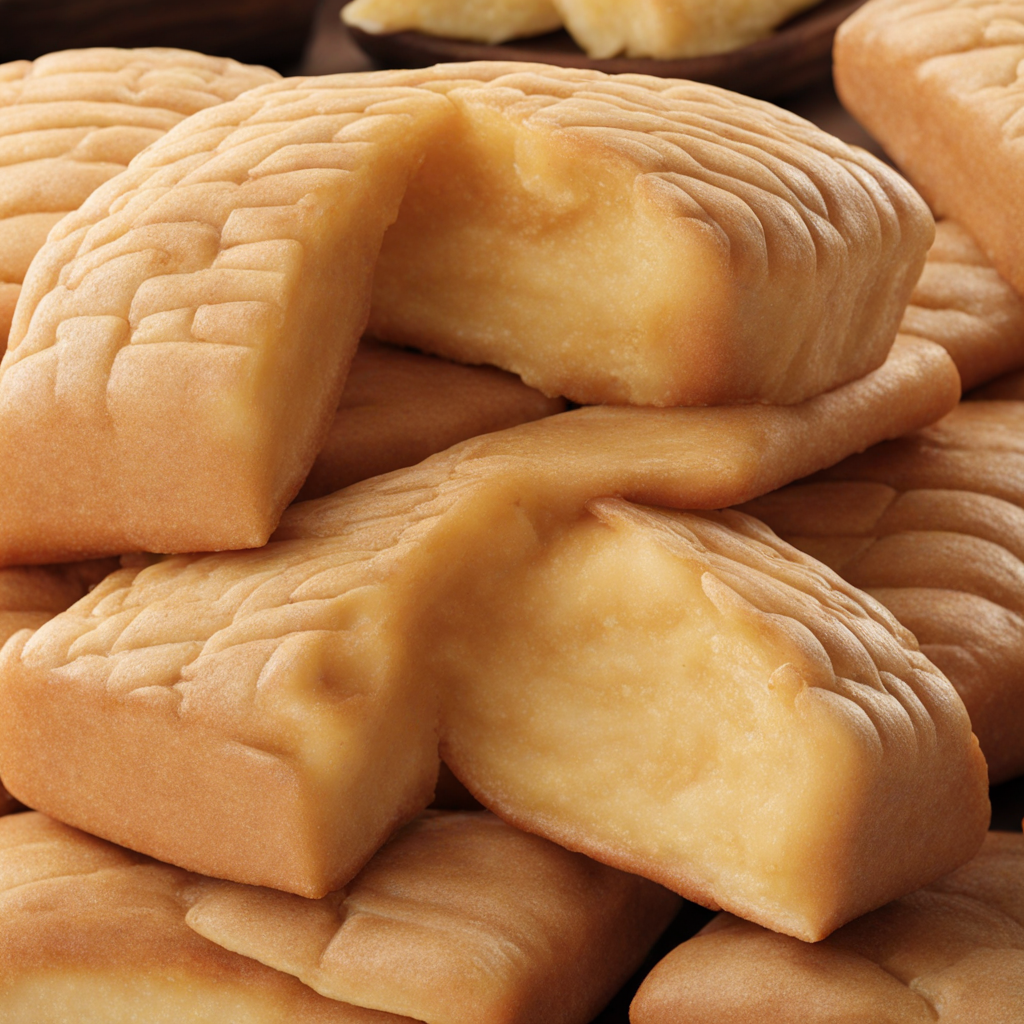Chipa Piraju
Chipa Piraju is a delightful and traditional Paraguayan dish that beautifully showcases the country’s rich culinary heritage. This cheesy bread roll is made primarily from cassava flour, which gives it a unique texture that is both chewy and slightly crisp on the outside. The dough is typically enriched with Paraguayan cheese, which melts beautifully during cooking, creating a wonderfully creamy interior. The use of fresh ingredients, including eggs and milk, adds depth to the flavor and moisture to the dough, making each bite a comforting experience. One of the standout features of Chipa Piraju is its versatility. While the basic recipe is simple, it can be customized with various ingredients to suit individual tastes. Some variations incorporate herbs like parsley or cilantro, adding a fresh and vibrant element. Others might include spices or even bits of meat, turning the bread rolls into a more substantial snack or appetizer. Regardless of the variation, the essence of Chipa Piraju remains: a warm, cheesy delight that beckons to be enjoyed fresh from the oven. When served, Chipa Piraju offers a wonderful balance of flavors and textures. The golden-brown crust provides a satisfying crunch, while the inside remains soft and gooey, thanks to the melting cheese. Often enjoyed as a breakfast item or an afternoon snack, these rolls are perfect for pairing with a cup of coffee or a refreshing yerba mate. Whether you’re exploring Paraguayan cuisine for the first time or looking to indulge in a new comfort food, Chipa Piraju is sure to captivate your taste buds and leave you yearning for more.
How It Became This Dish
Chipa Piraju: A Culinary Heritage of Paraguay Chipa Piraju is a delightful cheese bread deeply rooted in the culinary traditions of Paraguay. A staple in the homes and kitchens of this South American nation, it embodies the rich cultural tapestry and historical influences that have shaped Paraguayan cuisine over the centuries. #### Origins The origins of Chipa Piraju can be traced back to the indigenous Guaraní people, who inhabited the region long before European colonization. The Guaraní had a profound knowledge of local agriculture, utilizing maize as a staple food source. When the Spaniards arrived in the 16th century, they introduced new ingredients such as wheat and dairy products, which significantly influenced the local diet. Chipa in general, which refers to a range of baked cheese breads, is believed to have evolved from the Guaraní’s use of maize. The word "chipa" itself is derived from the Guaraní language, literally meaning "to bake." Chipa Piraju is a specific variant that incorporates a distinct blend of ingredients, primarily cassava flour, cheese, eggs, and milk, leading to its unique texture and flavor. The term “Piraju” translates to “fish” in Guaraní, hinting at the historical link between the dish and the water bodies that traverse Paraguay. This connection to nature and the utilization of local produce reflect the indigenous philosophy of living harmoniously with the environment. #### Cultural Significance Chipa Piraju is more than a food item; it holds a significant place in Paraguayan culture. Traditionally, it is associated with festivals, religious celebrations, and family gatherings. The preparation of Chipa Piraju often becomes a communal event, where families come together to share stories, laughter, and culinary skills. One of the most noteworthy occasions for making Chipa Piraju is during Holy Week, a time of deep religious observance in Paraguay. The dish serves not only as sustenance but also as a symbol of unity and shared faith. It is often enjoyed alongside tereré, a traditional herbal drink made with yerba mate, which further enhances its cultural importance. In many Paraguayan households, the making of Chipa Piraju is passed down from generation to generation. Grandmothers often teach their grandchildren the intricacies of the recipe, ensuring that the tradition remains alive. This culinary heritage is a way of preserving identity, values, and history. #### Development Over Time As Paraguay's history unfolded, so too did the evolution of Chipa Piraju. The dish has undergone various modifications influenced by factors such as regional availability of ingredients, migration patterns, and globalization. In the 19th century, with the arrival of European immigrants, particularly Italians and Germans, new techniques and flavors began to permeate Paraguayan cuisine. The introduction of different cheeses and baking methods diversified the way Chipa Piraju was prepared. The original recipe, which may have relied solely on local cheese, began to adapt to include a variety of cheeses, enhancing the flavor profile and texture. The post-war era brought about significant changes in Paraguayan society. Economic challenges and urban migration led many to seek food that was both affordable and satisfying. Chipa Piraju emerged as an accessible comfort food, offering nourishment and a taste of home for many Paraguayan families living in urban areas. Its affordability, combined with the nostalgia it evokes, solidified its status as a beloved dish. As Paraguay entered the 21st century, globalization and the rise of social media transformed how traditional foods were perceived and consumed. Chipa Piraju gained international attention as travelers and food enthusiasts discovered the unique flavors of Paraguayan cuisine. Restaurants began incorporating it into their menus, often experimenting with modern twists while respecting the traditional methods of preparation. #### Ingredients and Preparation The traditional recipe for Chipa Piraju consists of a few key ingredients: cassava flour (or manioc flour), cheese (typically Paraguayan cheese, but other cheeses can be used), eggs, milk, and salt. Some variations may include additional ingredients such as herbs, spices, or even vegetables, depending on regional preferences or personal family traditions. The preparation of Chipa Piraju is relatively simple yet requires a careful balance of ingredients. The process begins with mixing the cassava flour and cheese, then adding eggs and milk to create a dough-like consistency. The mixture is then shaped into small, round forms, which are baked until they acquire a golden-brown crust. The result is a deliciously chewy, cheesy bread that is enjoyed warm. #### Modern Variations In contemporary times, Chipa Piraju has seen numerous adaptations. Some chefs experiment with gluten-free options, using alternative flours, while others infuse the bread with international flavors such as herbs de Provence or sun-dried tomatoes. Despite these modern twists, the essence of Chipa Piraju remains intact, continuing to honor its roots while embracing new culinary trends. Social media has further propelled the dish into the spotlight, with food bloggers and influencers showcasing their own versions of Chipa Piraju. This has sparked interest in traditional Paraguayan cuisine, encouraging a new generation to explore their culinary heritage. #### Conclusion Chipa Piraju stands as a testament to the resilience and adaptability of Paraguayan culture. It carries with it the history of the Guaraní people, the influence of Spanish colonization, and the contributions of immigrant communities, all woven into the fabric of this beloved dish. As Paraguay continues to navigate the complexities of modern life, Chipa Piraju remains a symbol of home, tradition, and community. Whether enjoyed at family gatherings, religious celebrations, or simply as a snack with tereré, it connects generations and evokes a sense of belonging. In every bite of Chipa Piraju, one can taste the rich history of Paraguay, making it not just a dish, but a culinary narrative of a nation.
You may like
Discover local flavors from Paraguay


